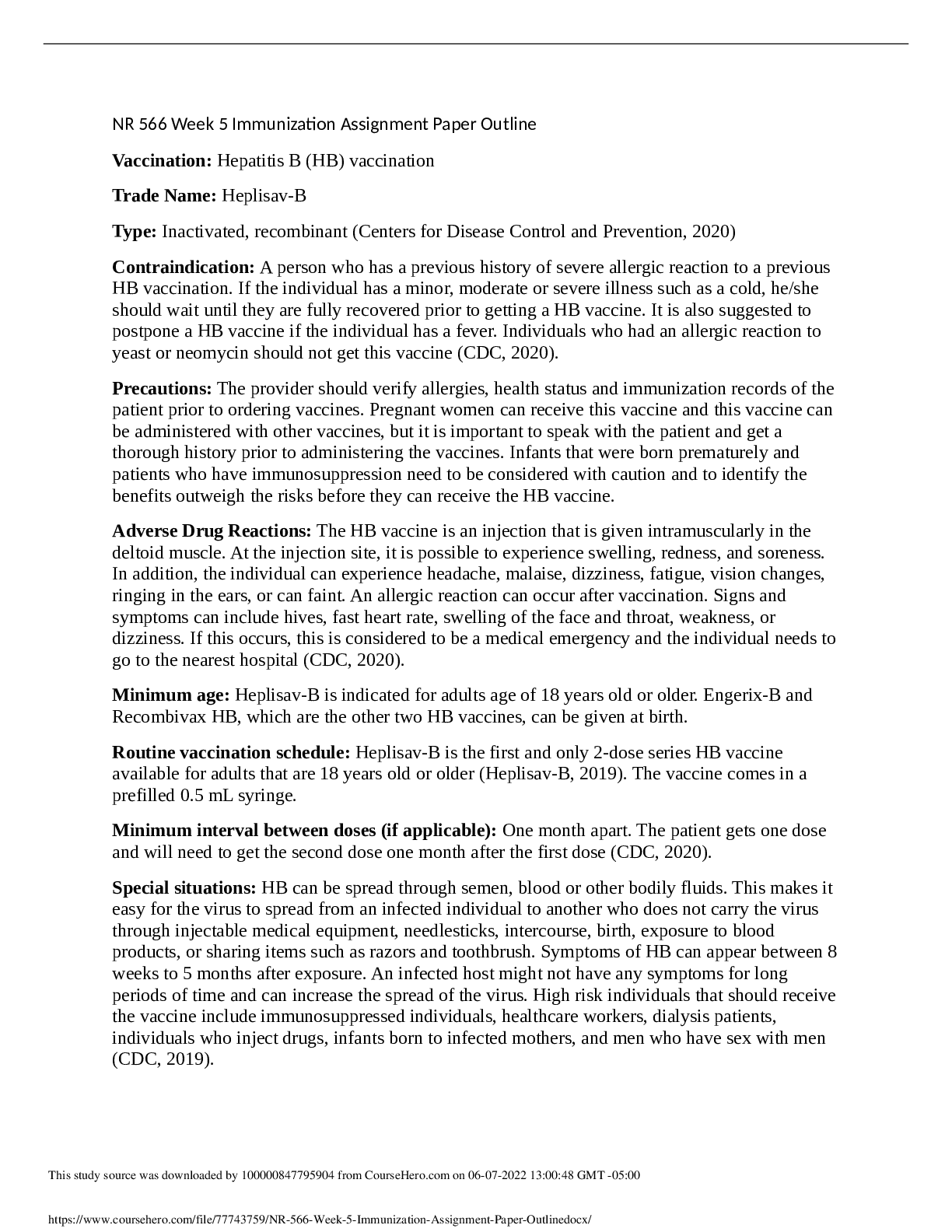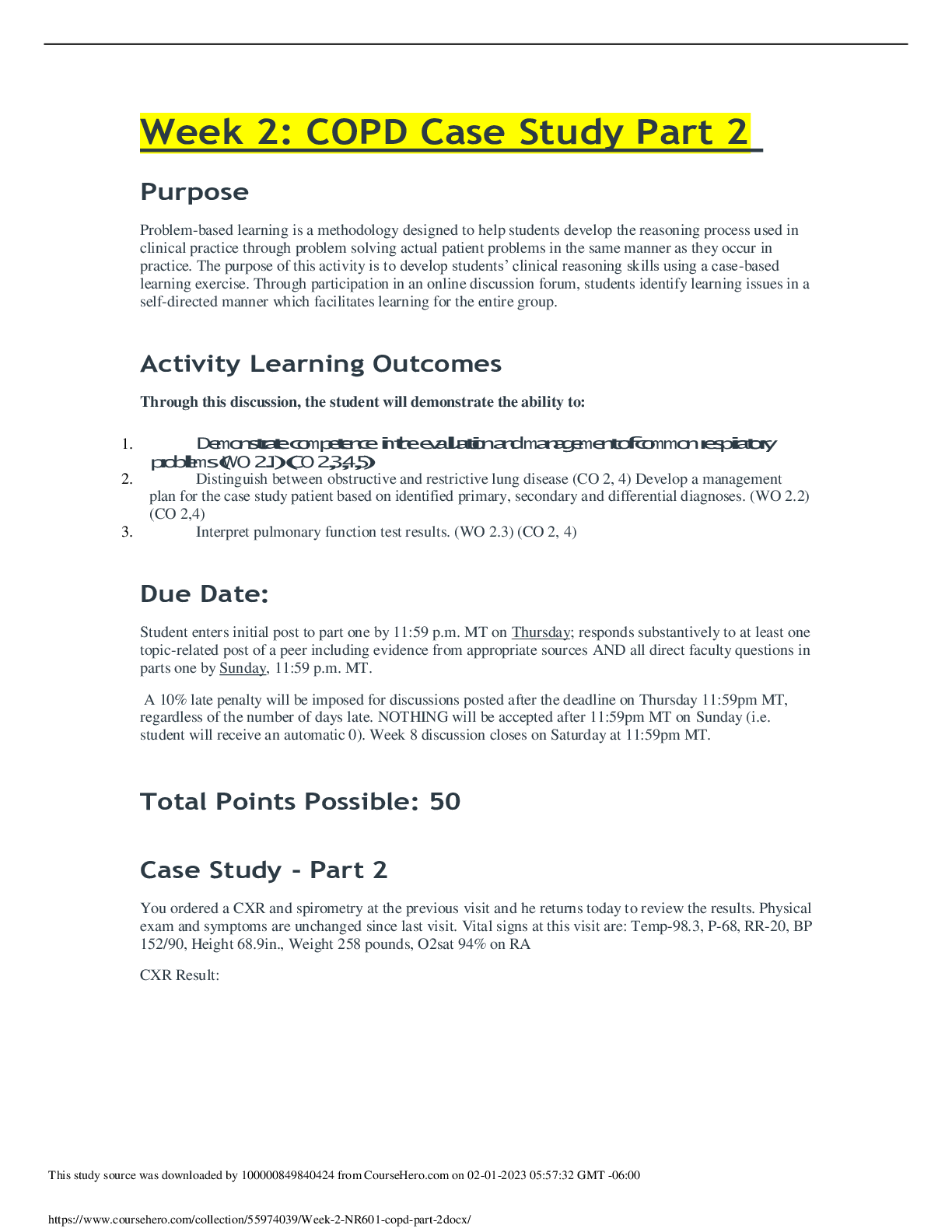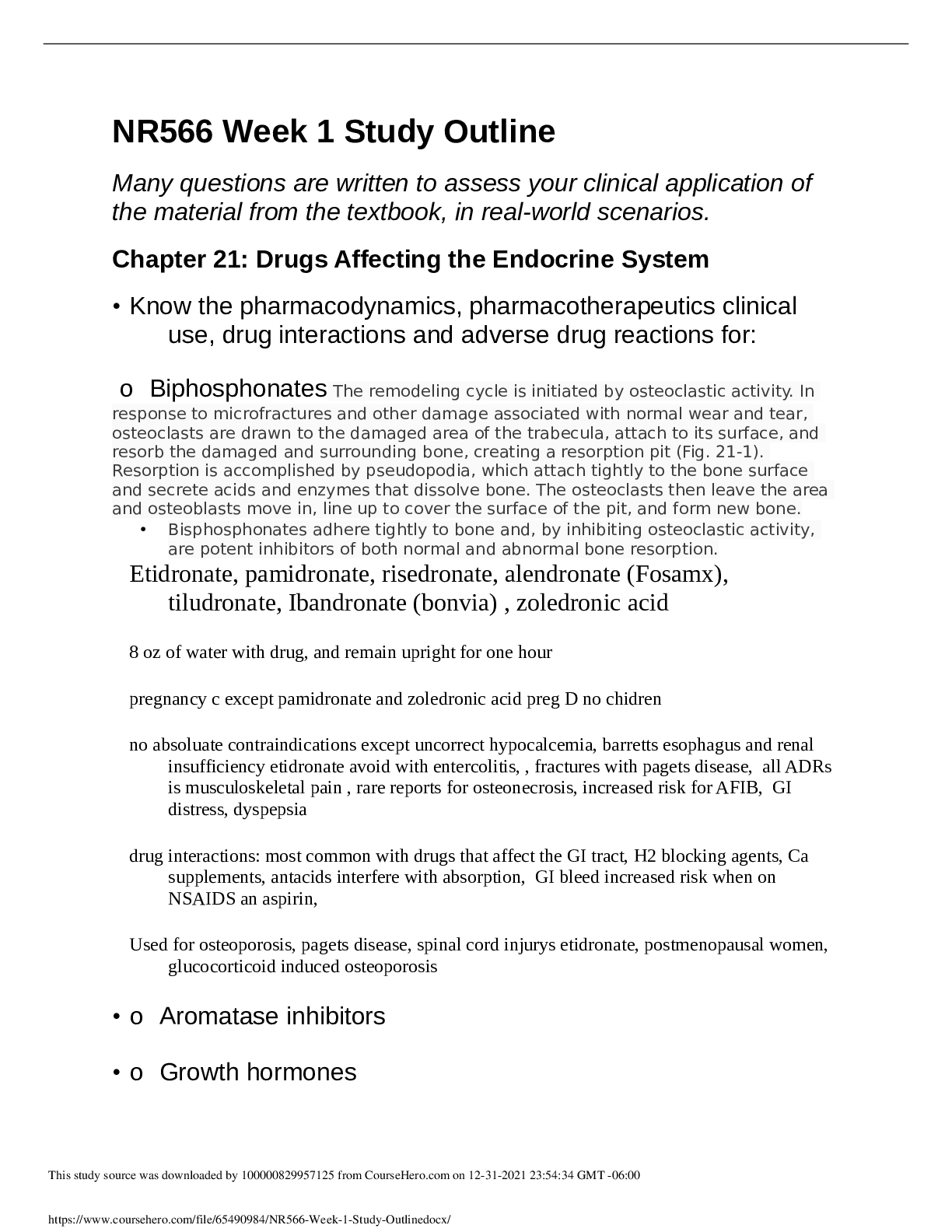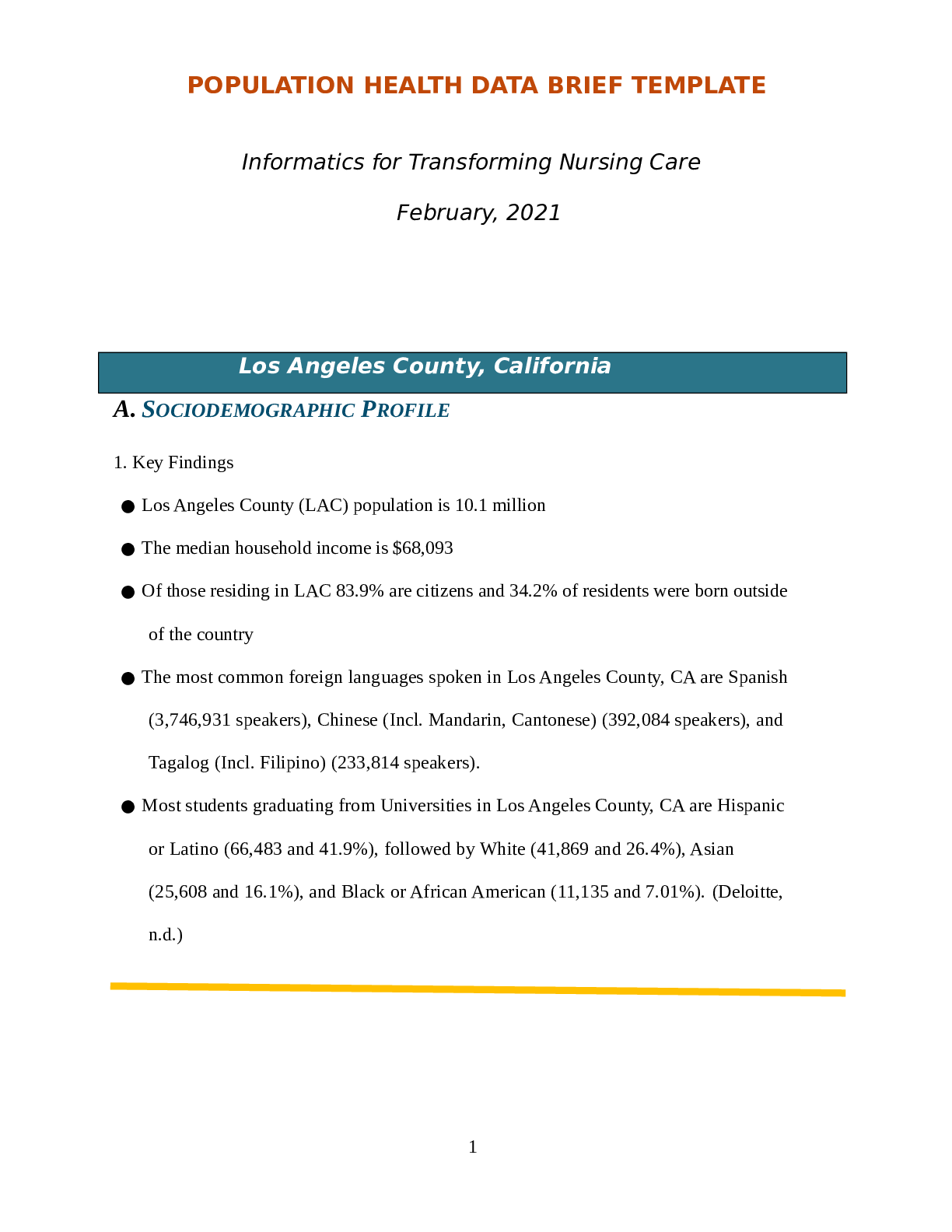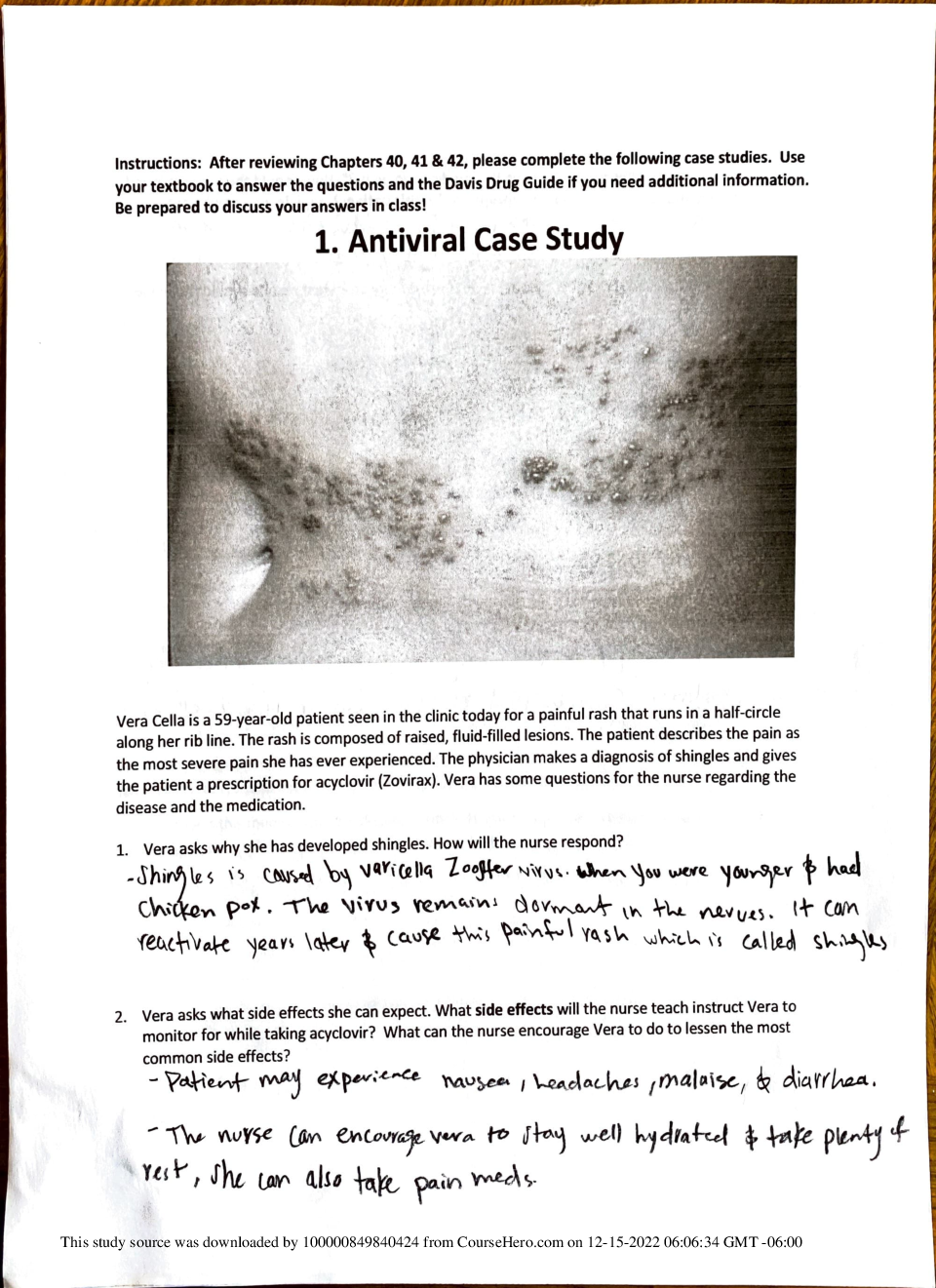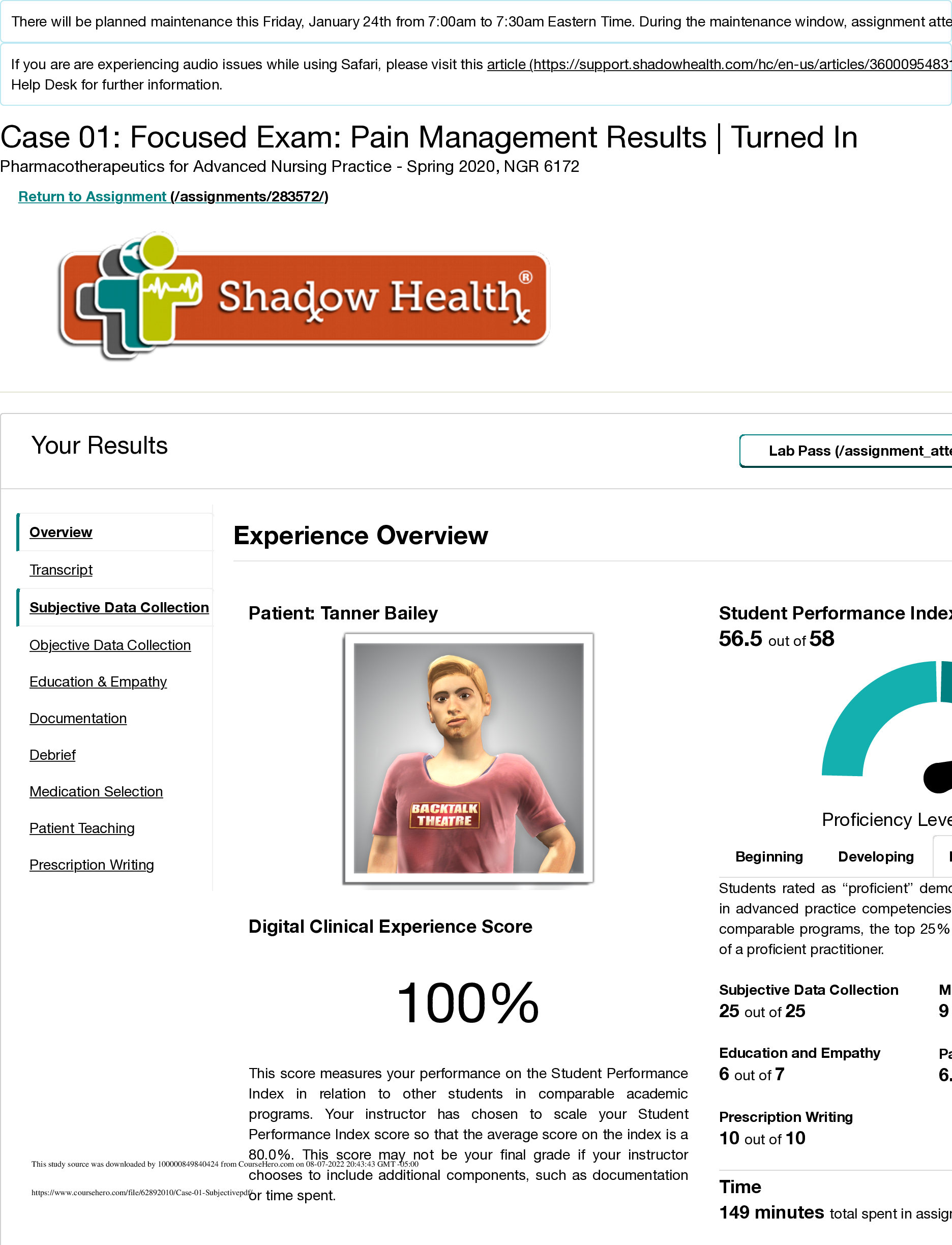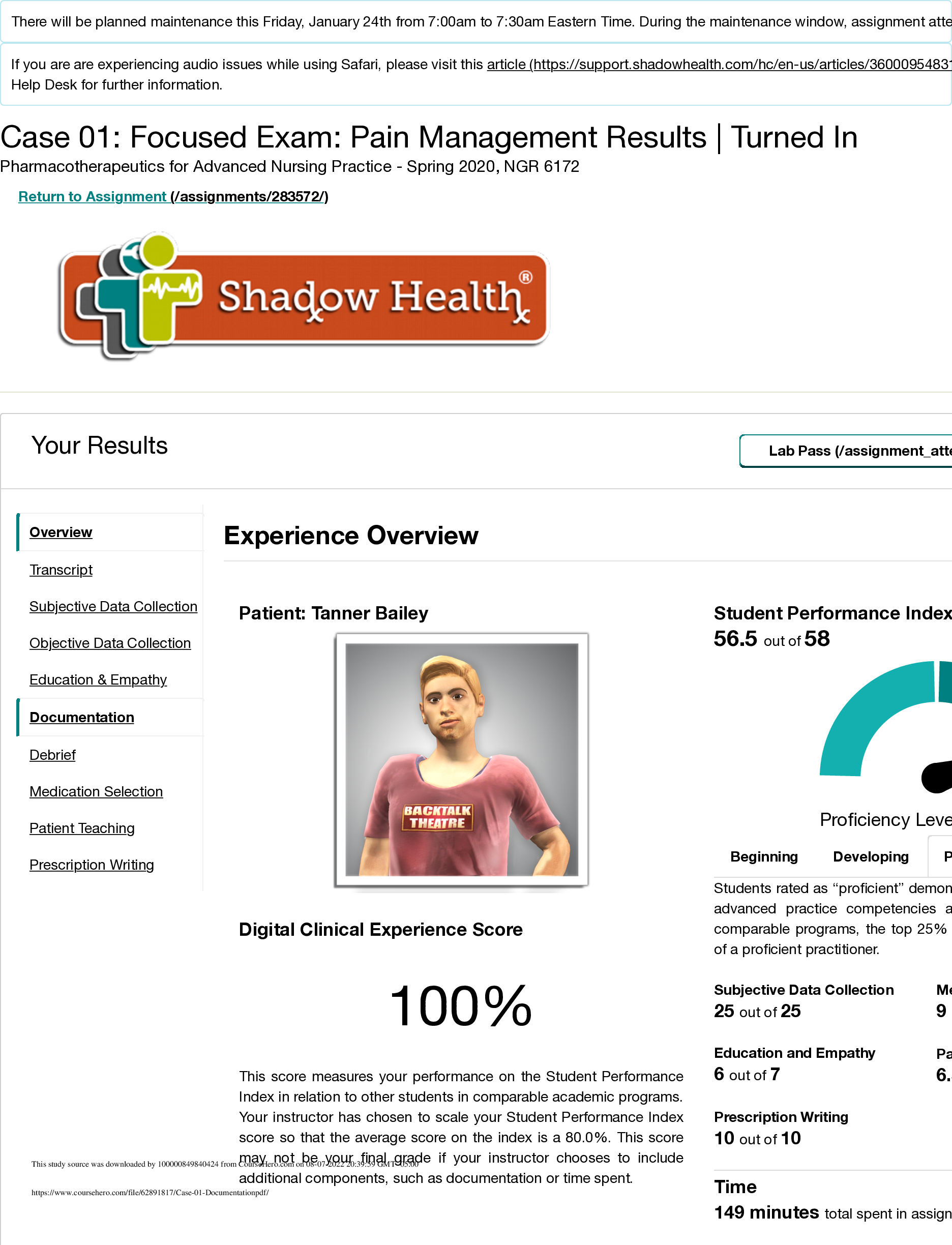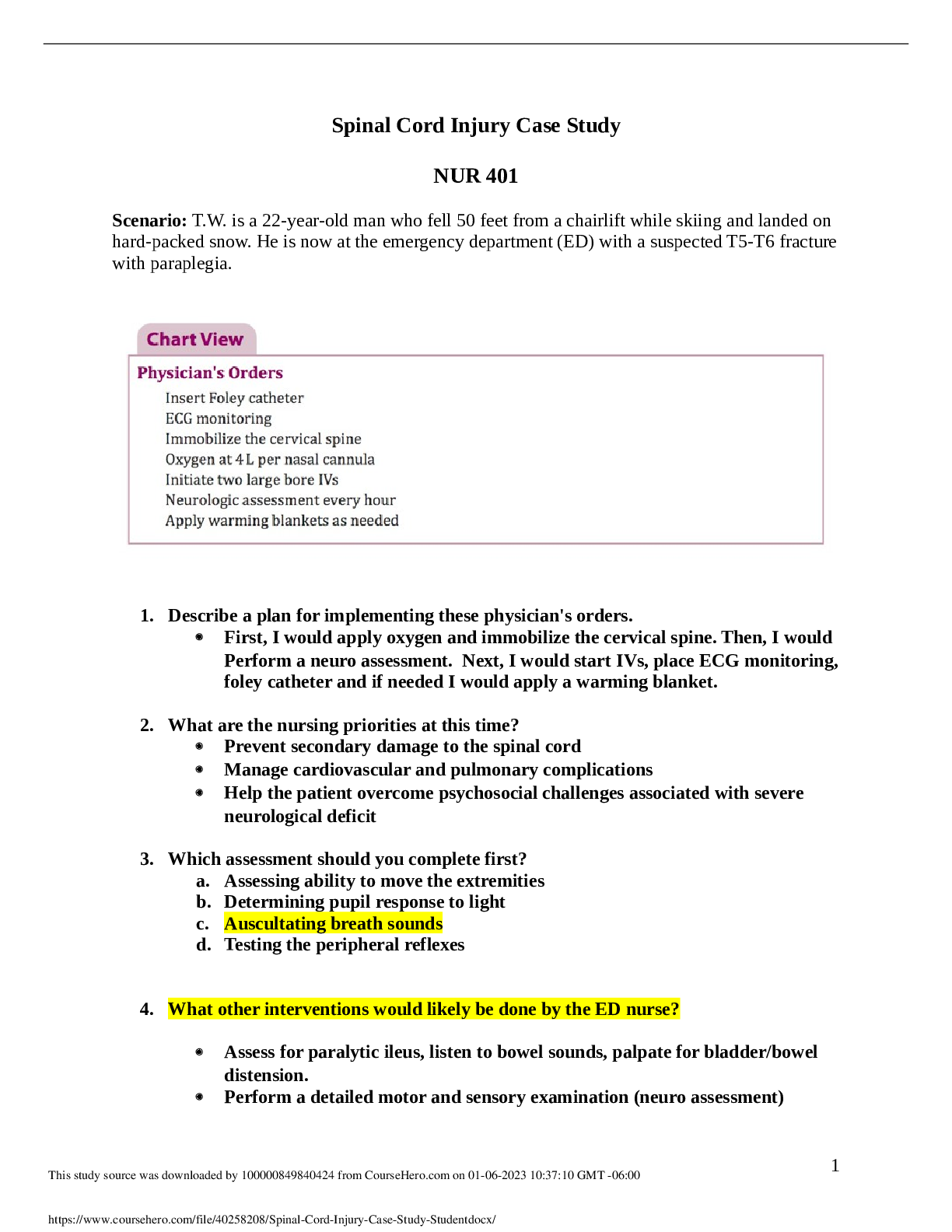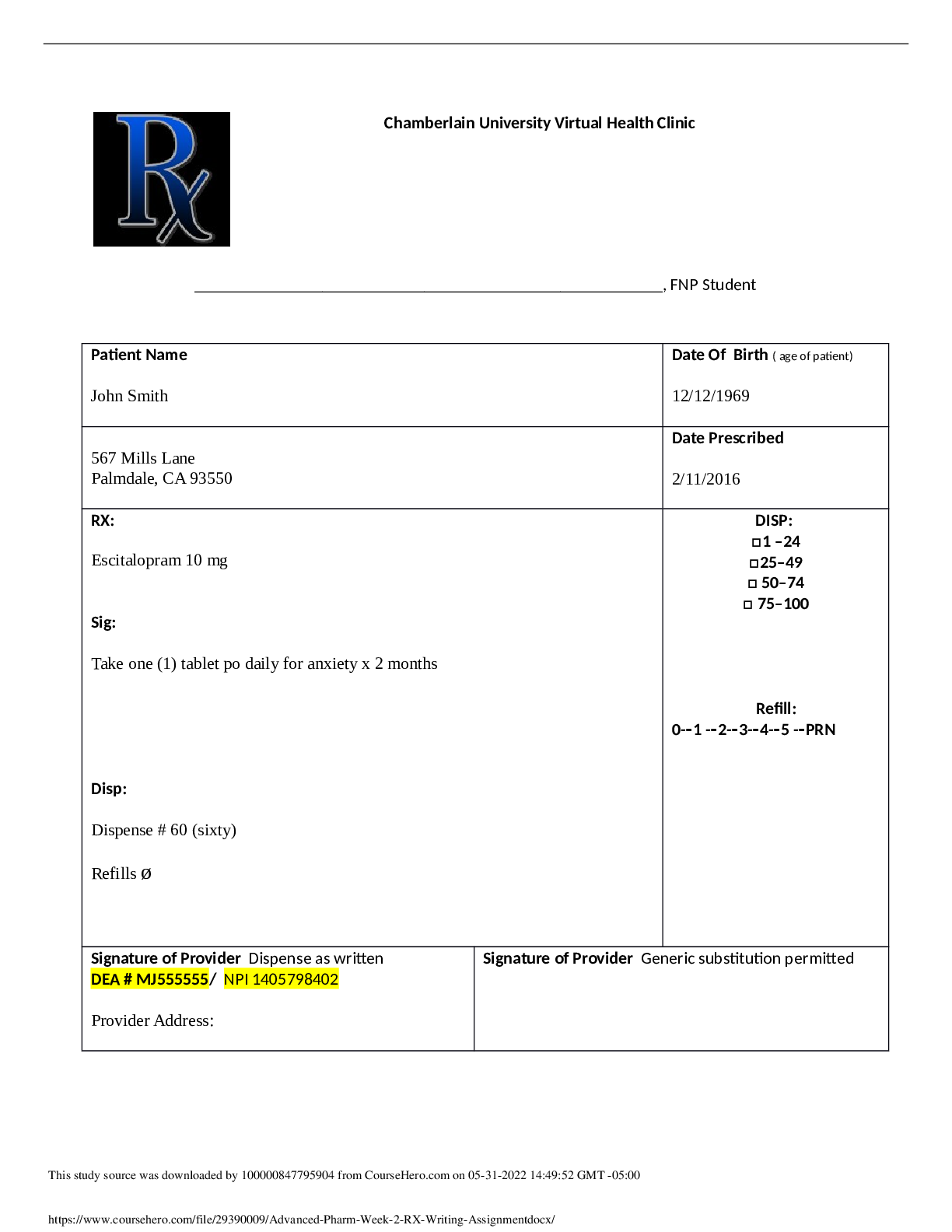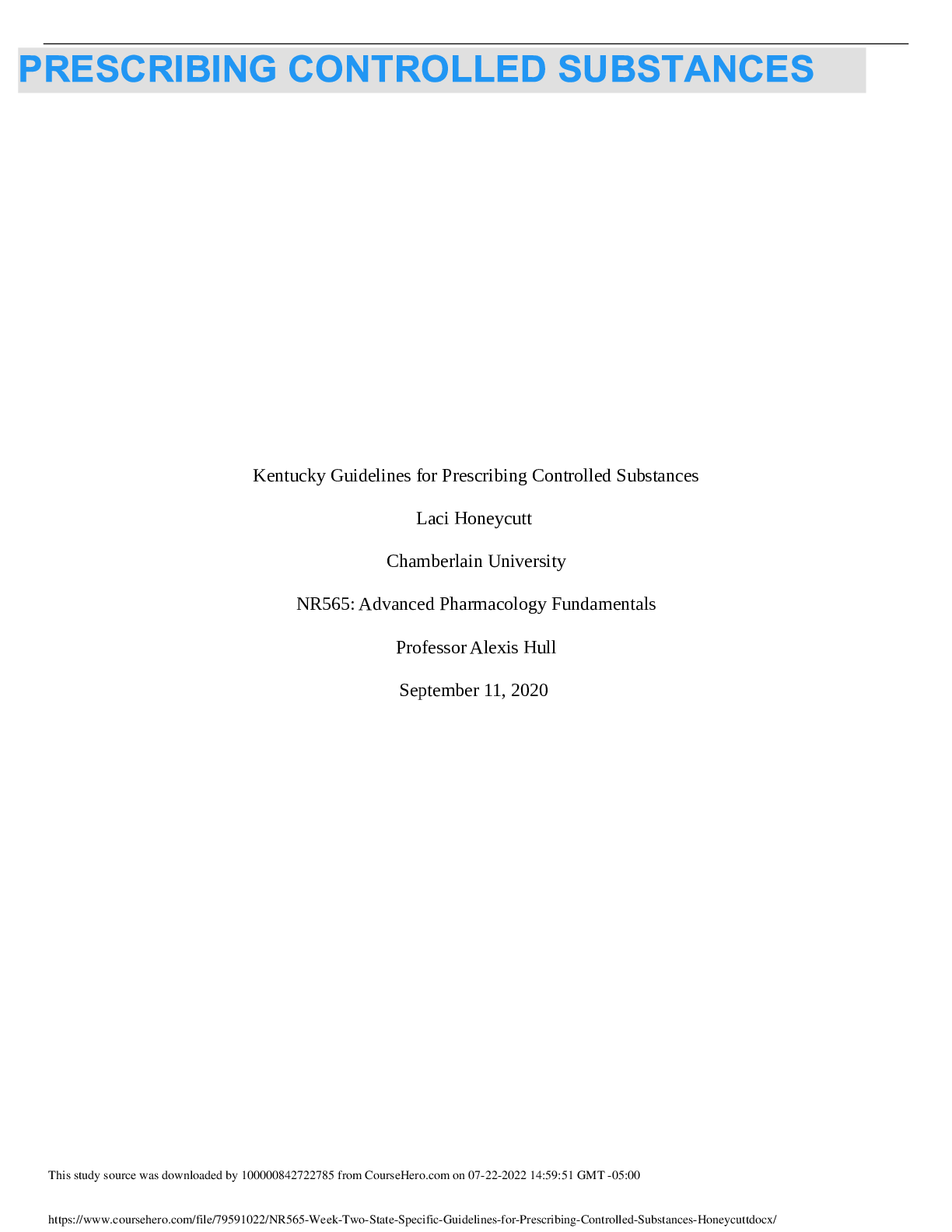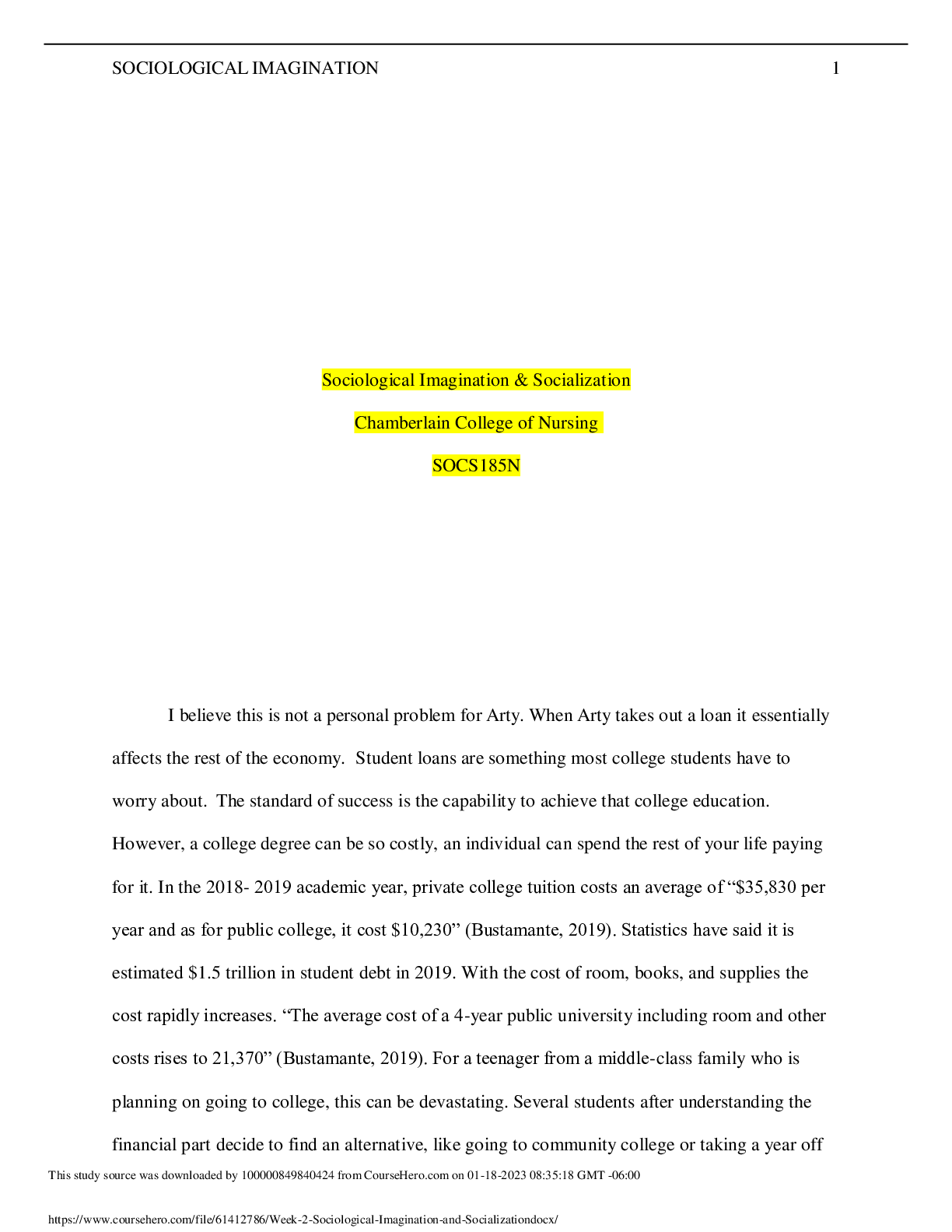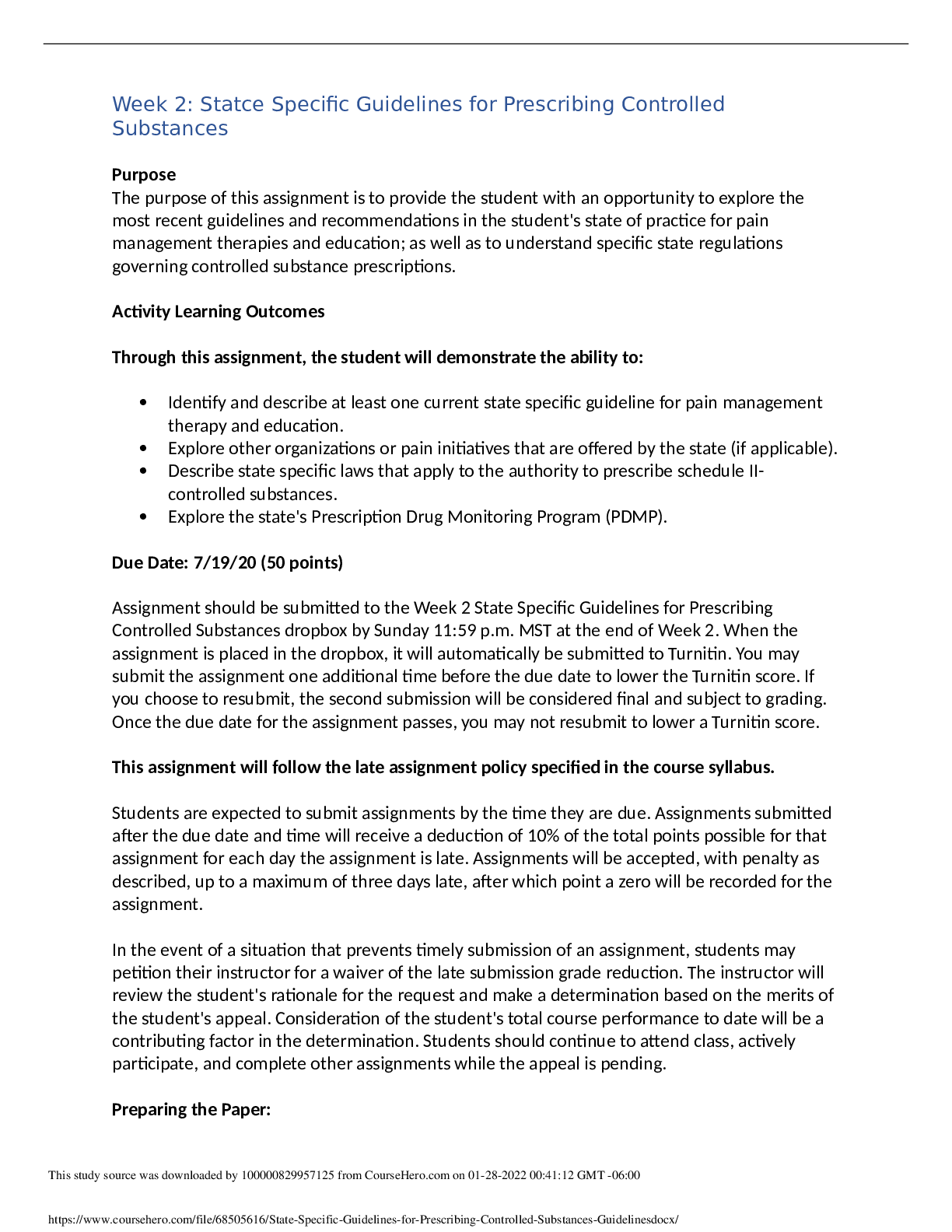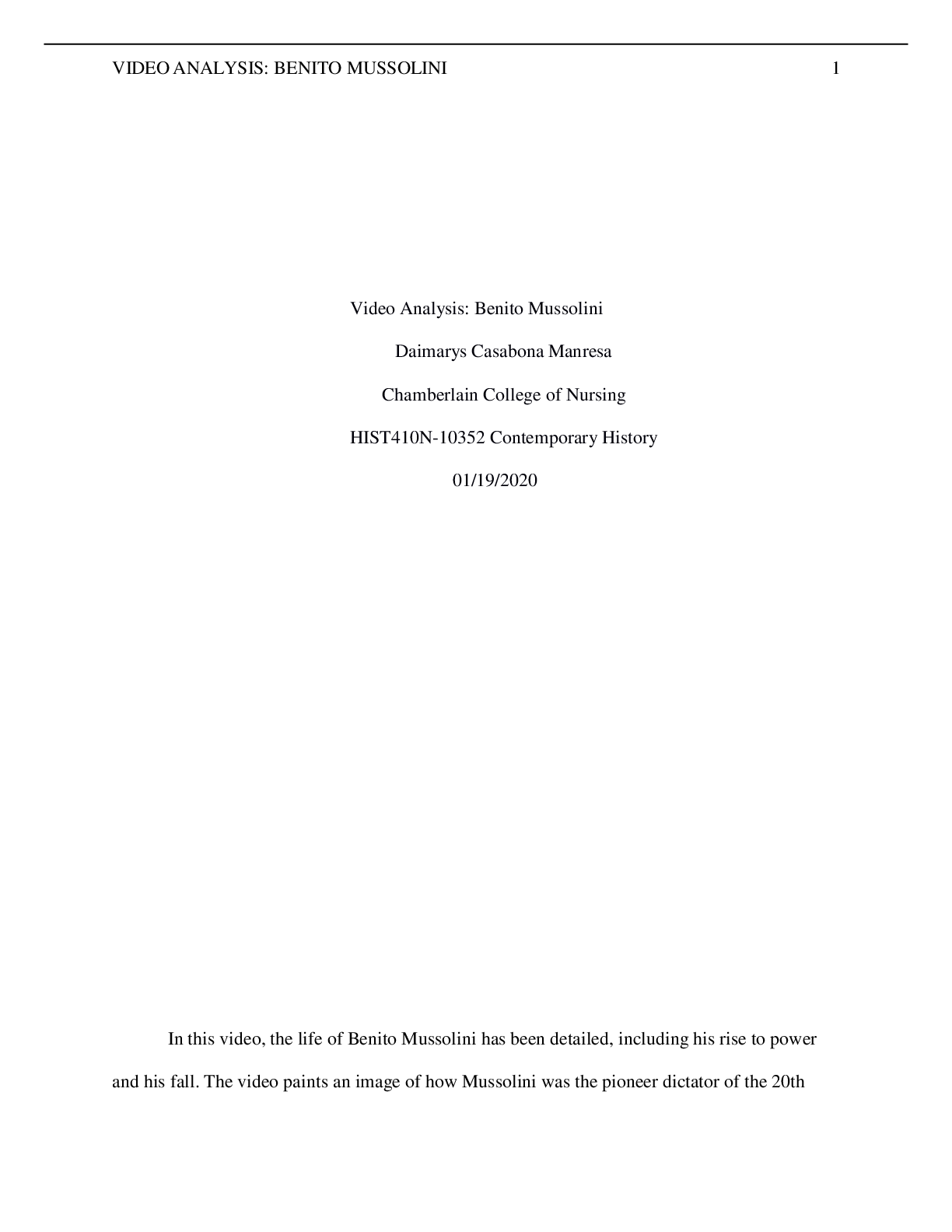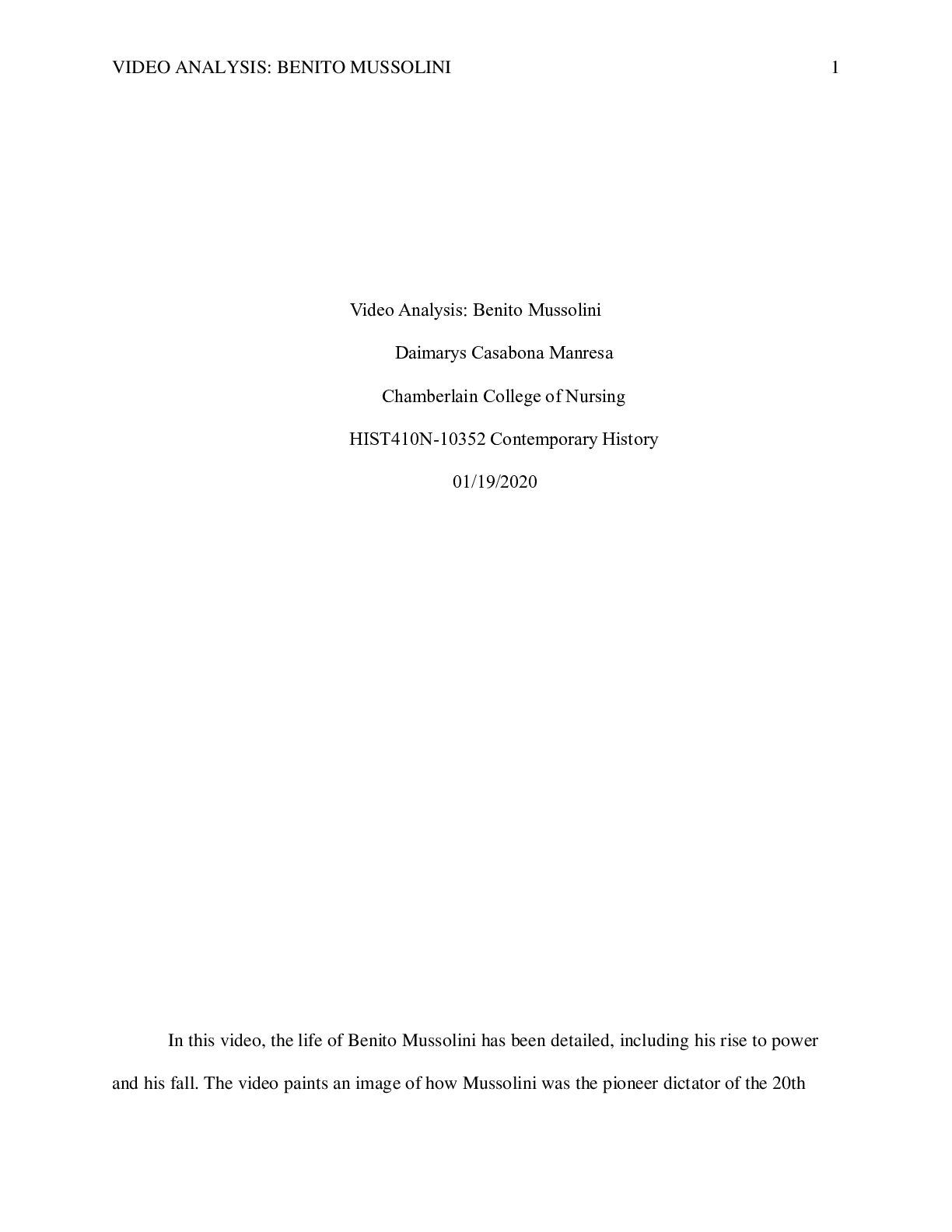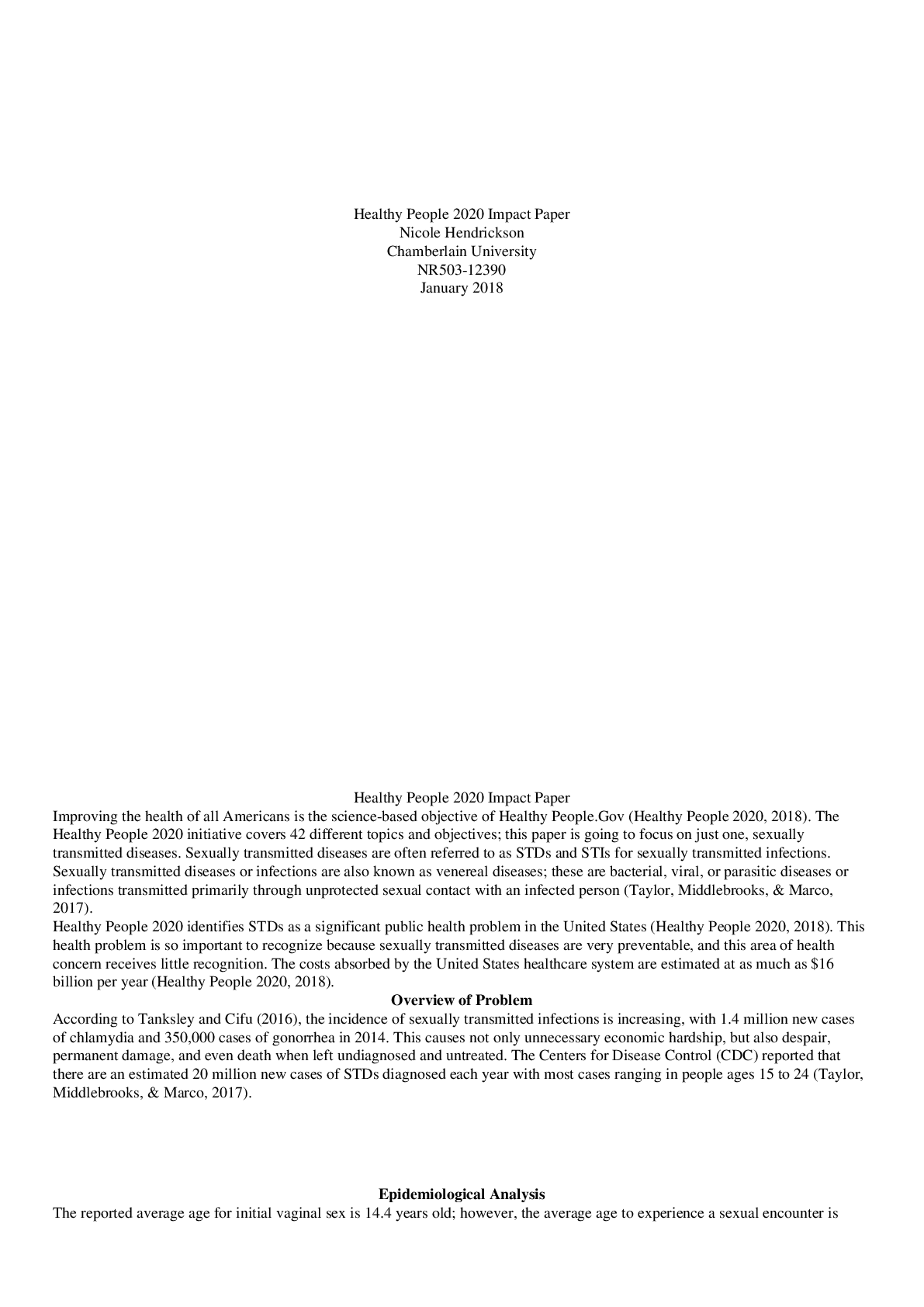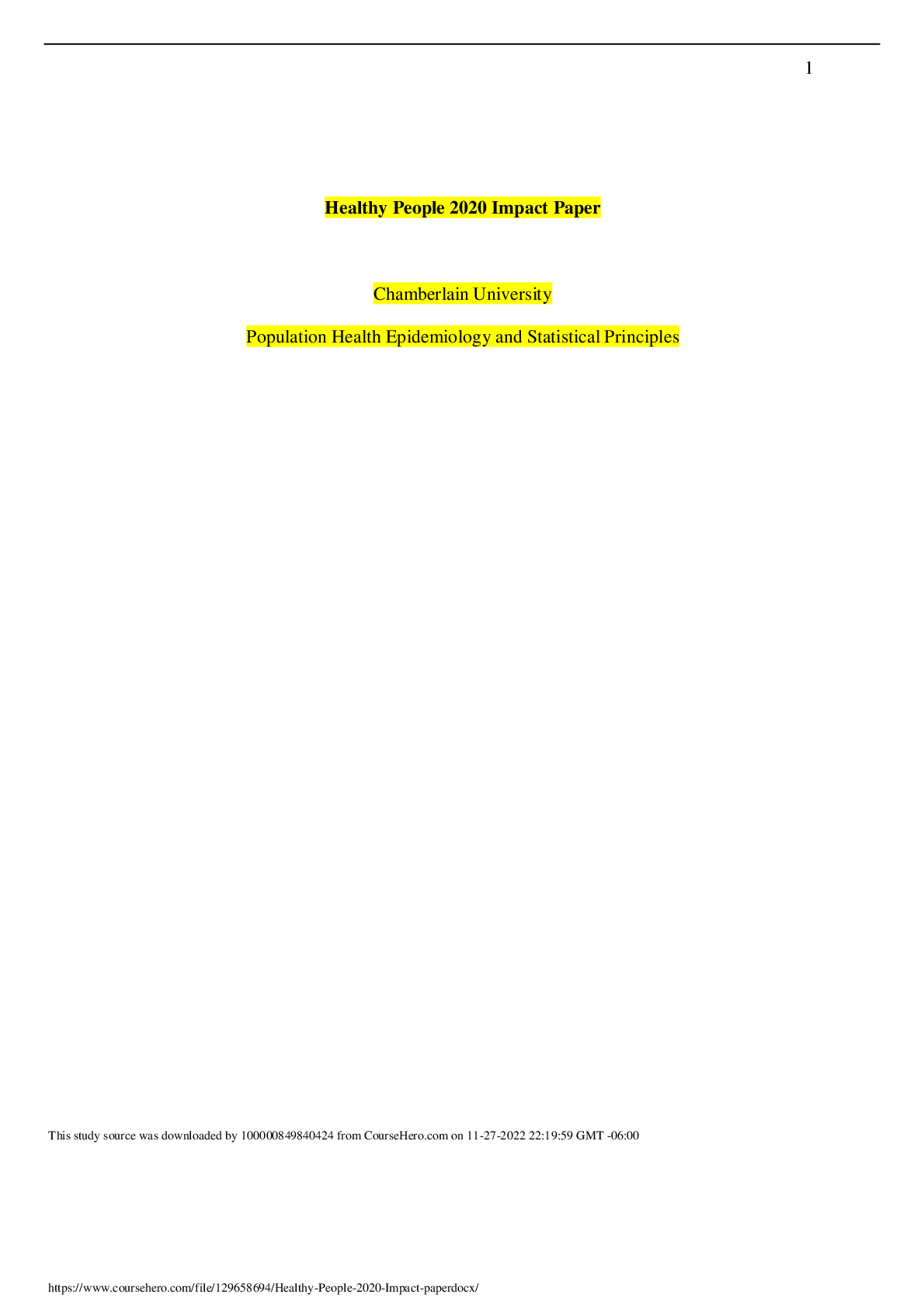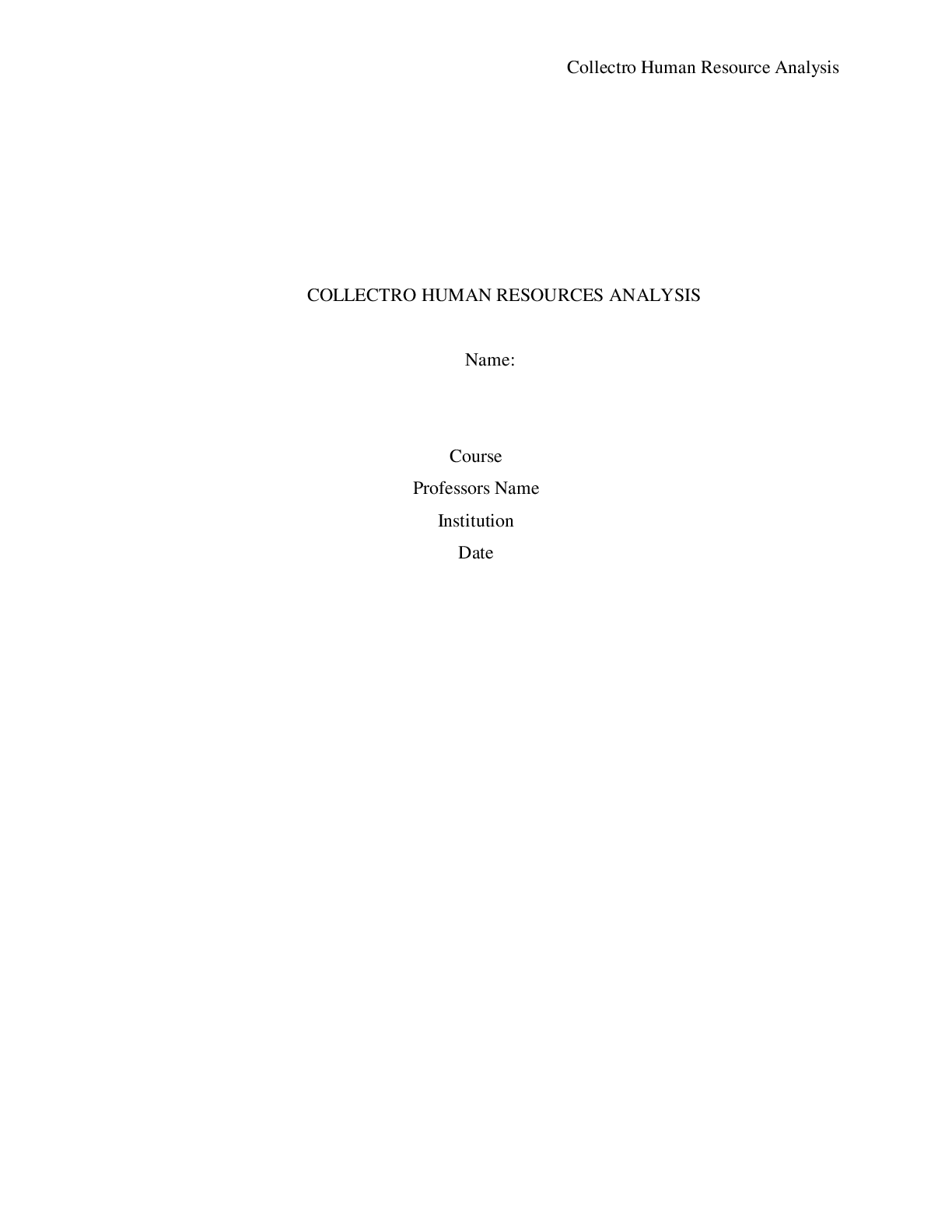*NURSING > CASE STUDY > NR 503 Week 2 Assignment: Healthy People 2020 Impact Paper | SLEEP HEALTH (GRADED A) (All)
NR 503 Week 2 Assignment: Healthy People 2020 Impact Paper | SLEEP HEALTH (GRADED A)
Document Content and Description Below
Sleep Health: Healthy People 2020 Impact Paper Chamberlain College of Nursing NR503-Population Health Epidemiology and Statistical Principles Sleep Health: Healthy People 2020 Impact Paper ... Healthy People provides a set of goals and objectives at ten-year increments that are created to improve the overall health of all Americans. They monitor progress over time to measure the impact of prevention activities, “empower Americans to make informed health decisions, and encourage collaborations among communities and sectors” (Healthy People 2020, 2019). The Healthy People 2020 initiative covers many topics and objective. However, this paper is going to focus merely on sleep health, specifically for school aged children and adolescents. The Healthy People 2020 goal for sleep health is stated to “increase public knowledge of how adequate sleep and treatment of sleep disorders improve health, productivity, wellness, quality of life, and safety on roads and in the workplace” (Healthy People 2020, 2019). Sleep health is identified as a significant public health problem that needs to be recognized due to the fact that sleep is an important contributor to physical and mental health for all humans and the fact that it is incredibly remediable (Chaput & Dutil, 2016). Healthy People 2020 (2019) state that sleep is a basic requirement for infants through adolescents’ health and development and the loss of sleep influences negative patterns of behaviors that affect individual and family health as well as interpersonal relationships. Overview, Background, and Significance of Sleep Health Insufficient sleep in adolescents has been shown to be associated with a wide variety of adverse outcomes such as poor mental and physical health, behavioral problems, lower academic grades, and an increase in risky behaviors (Wheaton, Chapman, & Croft, 2016). There is also evidence that suggest that insufficient sleep can cause weight gain and obesity (Chaput & Dutil, 2016). Healthy People 2020 (2019) reports that adequate sleep is necessary to fight off infection, support metabolism of sugar to prevent diabetes, and perform well in school. They also state that the time and amount of sleep affect many endocrine, metabolic, and neurological functions and if left untreated can contribute to increased risk of heart disease, hypertension, obesity, and diabetes (Healthy People 2020, 2019). Sufficient sleep among ninth through twelfth graders (SH-3) or students getting sufficient sleep on school nights is the sleep health objective for adolescents for Healthy People 2020. The data reports that nationally in 2017, only 25.4 percent of this population reported that they were getting sufficient sleep on school nights. This is a decrease from 31.7 in 2013 and 27.3 in 2015. In Kentucky, the report states that 22 percent reported sufficient sleep in 2017 which is also a decrease from 24.3 percent in 2015. These trends show a continuous decrease in the amount of young people getting 8 or more hours of sleep on school nights. (Healthy People 2020, 2019) Epidemiological Analysis of the Problem Descriptive epidemiology is used to describe disease distributions and determinants and describes the variations in disease frequency among populations by geographical locations over time (Liu, 2018). In other words, it is used to describe the who, what, when, where, and why of a disease. Studies have shown there are more at risk populations than others for sleep disturbances. Socioeconomic position has proven to be a very important factor in sleep quality and duration (Knutson, 2014). Obviously, lower social classes have higher incidence of sleep disturbance. Many factors contribute to this such as homelessness, poor conditions of home, loud neighborhood, and disturbed home life. Some studies have also raised a concern for higher social classes having more sleep disturbances due to modern lifestyle changes such as increased stress, later bedtime, and more media usage or screen time (Segura-Jimenez et. al., 2015). Healthy People 2020 state that grade 9 through twelve show the highest incidence of sleep disturbances among the younger population. Healthy People 2020 also state that Females are more likely to get insufficient sleep with 24.6 percent getting sufficient sleep and males 26.3 percent. Asian ethnicity population report very poor sleep with only 18.1 percent stating that they are able to get sufficient sleep and people with 2 or more races reporting 19.5 percent. Sophomores and seniors report the least amount of sleep reporting 21.4 percent and 17.6 percent respectively. (Healthy People 2020, 2019) Application of HP 2020 As previously mentioned, one of the goals of Healthy People 2020 is to improve sleep health. They state that their goal is to “increase American’s knowledge on the importance of adequate sleep and treatment of sleep disorders and how it could improve health, productivity, wellness, quality of life, and safety on roads and in the workplace” (Healthy People 2020, 2019). A specific objective that is directly related to sleep health of school aged children and adolescents is SH-3 objective: “Increase the proportion of students in grades 9 through twelve who get sufficient sleep” (8 hours or more on an average school night) (Healthy People 2020, 2019). The target is for 33.1 percent of this population to get sufficient sleep. This information was obtained utilizing the questionnaire sent out by Youth Risk Behavior Surveillance System (YRBSS). The YRBSS monitors different categories of health-related behaviors that contribute to the leading causes of death and disability among youth and adults. It includes national, state, territorial, tribal government, and local school-based surveys of representative samples of 9th through 12th grade students. There are 89 questions on the survey. The question that pertains to sleep health is as follows: On an average school night, how many hours of sleep do you get? 1. 4 or less hours 2. 5 hours 3. 6 hours 4. 7 hours 5. 8 hours 6. 9 hours 7. 10 or more hours These surveys are conducted every two years, usually during the spring semester. Over the last few decades, these questionnaires have continuously been assessed and updated by experts that reword or delete and add questions. Internal reliability checks help identify the small percentage of students who falsify their answers. In order to obtain honest answers, students are informed on the importance of the survey and informed on procedures that have been developed to protect their privacy and allow for anonymous participation (CDC, 2018). Methodological studies are conducted on the questionnaires to test the validity and reliability. These studies include test-retest reliability studies, a study assessing the validity of self-reported height and weight; a study assessing the effect of changing the race/ethnicity question; a study examining how varying honesty appeals, question wording, and data-editing protocols affect prevalence estimates; and a study on varying the mode and setting of survey administration affects prevalence (CDC, 2018). A downfall to this survey is that it only has an English language version. Although these surveys are conducted in the school settings so that majority of the students should write and speak English, English may not be their first language and some questions may be confusing to them. If they were to ask for help on the question, it would not be completely anonymous. If they answer without understanding the question, it would not be a reliable answer. Another downfall to this survey is that the large urban school districts are pulling more weight with answers because of the large number of students they have. Therefore, the results may not be a complete and accurate depiction of the adolescent population in other areas of the country. Population Level Planning Interventions With sleep health of school aged children and adolescence being so important and having such consequences on physical and mental health, more should be done on the national and state levels. There is limited data on interventions being made and tracking of outcomes. Nationally, information in forms of pamphlets is given to schools and health provider locations. These pamphlets discuss the importance of sleep and the current statistics (CDC, 2018). They also give tips to parent and guardians as well as adolescents on how to improve sleep. Some of these tips include limiting caffeinated beverages, screen time (both tv and cell phones), stopping mind altering substances such as drugs and alcohol, not eating or drinking within a few hours of bedtime, establishing bedtime routines, and assessing if their extracurricular activities are too overwhelming and may need to be limited (National Sleep Foundation, n.d.). Having these pamphlets and information readily available does not guarantee that people are going to read the information or act upon it. Some researchers are urging for later school start times. They state that school aged children and adolescents need 8 to 10 hours of sleep and the times that schools start are interrupting their natural sleep cycle. Wheaton, Chapman, and Croft (2016) suggest that later school start times would increase the average number of sleep this population gets and in turn would decrease daytime sleepiness or falling asleep in class. They report that this would and improve overall academic performance, improve school attendance and tardiness, decrease the number of depressive symptoms and motor vehicle crashes (Wheaton, Chapman, & Croft, 2016). Conclusion Sleep health and the lack thereof is an obvious public health issue because of the major effects that sleep has on the human body. Healthy People 2020 is making great strides to assess this phenomenon especially in the high school population. However, not enough is being done on the national and state levels to improve these statistics. It is understood how this is a difficult task to take on due to the many different reasons children and adolescence sleep is affected as well as the different subgroups are more affected than others. However, if communities, states, and the nation work together, there could be some difference made. References Centers for Disease Control and Prevention. (2018). YRBSS Frequently Asked Questions. Retrieved from https://www.cdc.gov/healthyyouth/data/yrbs/faq.htm Chaput, J., and Dutil, C. (2016). Lack of sleep as a contributor to obesity in adolescents: Impacts on eating and activity behaviors. International Journal of Behavioral Nutrition and Physical Activity, 13(103), 1-9. doi: 10.1186/s12966-016-0428-0 Chaput, J.-P., Casey E. Gray, Kevin Belanger, Laura Callender, Margaret Sampson, Mark S. Tremblay, … Veronica J. Poitras. (2016). Systematic review of the relationships between sleep duration and health indicators in school-aged children and youth1. Applied Physiology, Nutrition, and Metabolism, 41(6), s266–s282. Retrieved from https://doi- org.chamberlainuniversity.idm.oclc.org/http://dx.doi.org/10.1139/apnm-2015-0627 Healthy People 2020. (2019). About Healthy People. Retrieved from https://www.healthypeople.gov/2020/About-Healthy-People. Healthy People 2020.(2019). Midcourse Review. Retrieved from https://www.healthypeople.gov/2020/data-search/midcourse-review/topic-areas Healthy People 2020. (2019). Sleep Health. Retrieved from https://www.healthypeople.gov/2020/topics- objectives/topic/sleep-health Knutson, K. (2014). Sociodemographic and cultural determinants of sleep deficiency: Implications for cardiometabolic disease risk. Social Science and Medicine, 79(1), 7-15. Retrieved from https://www.ncbi.nlm.nih.gov/pmc/articles/PMC3443287/ Liu, L. (2018). Descriptive Epidemiology. Retrieved from https://www.sciencedirect.com/topics/medicine-and-dentistry/descriptive-epidemiology National Sleep Foundation. (n.d.). Sleep for Teenagers. Retrieved from https://www.sleepfoundation.org/articles/teens-and-sleep. Segura-Jimenez, V., Carbonell-Baeza, A., Keating, X., Ruiz, J., & Castro-Pinero, J. (2015). Association of sleep patterns with psychological positive health and health complaints in children and adolescents. Quality of Life Research, 24, 885-895. doi: 10.1007/s11136-014-0827-0 Wheaton, A., Chapman, D., & Croft, J. (2016). School start times, sleep, behavioral, health, and academic outcomes: A review of the literature. Journal of School Health, 86(5), 363-381. doi: 10.1111/josh.12388 [Show More]
Last updated: 1 year ago
Preview 1 out of 9 pages
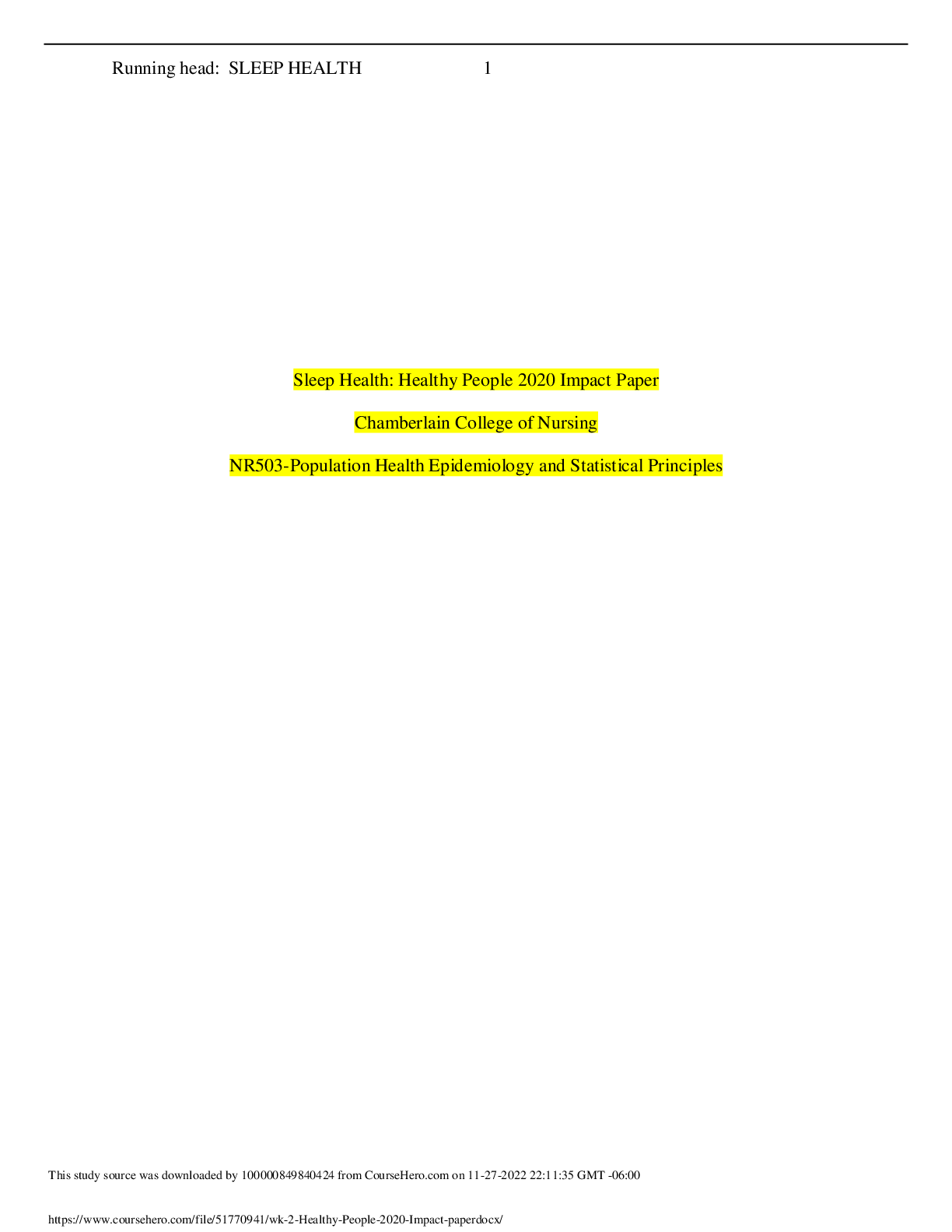
Reviews( 0 )
Document information
Connected school, study & course
About the document
Uploaded On
Nov 28, 2022
Number of pages
9
Written in
Additional information
This document has been written for:
Uploaded
Nov 28, 2022
Downloads
0
Views
41




